We Are Leading Company In Manufacturing Bearings.
THRUST ROLLER BEARING
Thrust ball bearings, composed of ball bearings supported in a ring, can be used in low thrust applications where there is little axial load. Cylindrical thrust roller bearings consist of small cylindrical rollers arranged flat with their axes pointing to the axis of the bearing. They give very good carrying capacity and are cheap, but tend to wear due to the differences in radial speed and friction which is higher than with ball bearings. Tapered roller thrust bearings consist of small tapered rollers arranged so that their axes all converge at a point on the axis of the bearing. The length of the roller and the diameter of the wide and the narrow ends and the angle of rollers need to be carefully calculated to provide the correct taper so that each end of the roller rolls smoothly on the bearing face without skidding. These are the type most commonly used in automotive applications (to support the wheels of a motor car for example), where they are used in pairs to accommodate axial thrust in either direction, as well as radial loads. They can support rather larger thrust loads than the ball type due to the larger contact area, but are more expensive to manufacture.
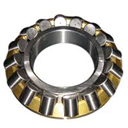 |
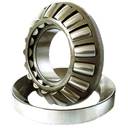 |
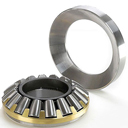 |
|---|
Metric Size: 51100, 51200, 51300, 51400 , O-SERIES, T-SERIES
ANGULAR CONTACT BEARING
A ball bearing is a type of rolling-element bearing that uses balls to maintain the separation between the bearing races. The purpose of a ball bearing is to reduce rotational friction and support radial and axial loads. It achieves this by using at least two races to contain the balls and transmit the loads through the balls. In most applications, one race is stationary and the other is attached to the rotating assembly (e.g., a hub or shaft). As one of the bearing races rotates it causes the balls to rotate as well. Because the balls are rolling they have a much lower coefficient of friction than if two flat surfaces were sliding against each other. Ball bearings tend to have lower load capacity for their size than other kinds of rolling-element bearings due to the smaller contact area between the balls and races. However, they can tolerate some misalignment of the inner and outer races.
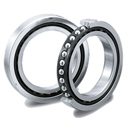 |
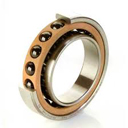 |
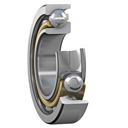 |
|---|
Size: BG 7200, 7300, 7400
SPHERICAL ROLLER BEARINGS
A spherical roller bearing is a rolling-element bearing that permits rotation with low friction, and permits angular misalignment. Typically these bearings support a rotating shaft in the [bore] of the inner ring that may be misaligned in respect to the outer ring. The misalignment is possible due to the spherical internal shape of the outer ring and spherical rollers.
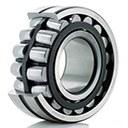 |
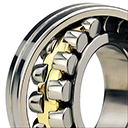 |
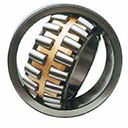 |
|---|
Size: 20200, 20300, 21200, 21300, 22200, 22300, 23000, 23200
UCF BEARINGS
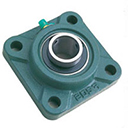 |
 |
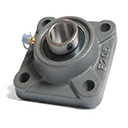 |
|---|
Size: UCF 204 - 0111'' = 20mm UCF 205 - = 25mm UCF 206 - = 30mm UCF 207 - 1/4" = 35mm UCF 208 - 1/2" = 40mm UCF 209 - = 45mm UCF 210 - 1 3/4'' = 50mm UCF 211 - 2" = 55mm UCF 212 - = 60mm UCF 213 - 2/4" = 65mm
UCFL BEARINGS
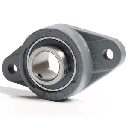 |
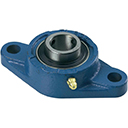 |
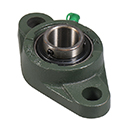 |
|---|
Size: UCFL 204 - 0111'' = 20mm UCFL 205 - = 25mm UCFL 206 - = 30mm UCFL 207 - 1/4" = 35mm UCFL 208 - 1/2" = 40mm UCFL 209 - = 45mm UCFL 210 - 1 3/4'' = 50mm UCFL 211 - 2" = 55mm UCFL 212 - = 60mm UCFL 213 - 2/4" = 65mm
UCP BEARINGS
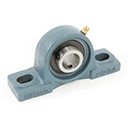 |
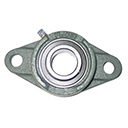 |
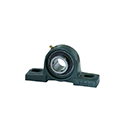 |
|---|
Size: UCP 204 - 0111'' = 20mm UCP 205 - = 25mm UCP 206 - = 30mm UCP 207 - 1/4" = 35mm UCP 208 - 1/2" = 40mm UCP 209 - = 45mm UCP 210 - 1 3/4'' = 50mm UCP 211 - 2" = 55mm UCP 212 - = 60mm UCP 213 - 2/4" = 65mm
UCT BEARINGS
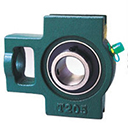 |
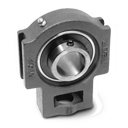 |
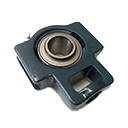 |
|---|
Size: UCT 204 - 0111'' = 20mm UCT 205 - = 25mm UCT 206 - = 30mm UCT 207 - 1/4" = 35mm UCT 208 - 1/2" = 40mm UCT 209 - = 45mm UCT 210 - 1 3/4'' = 50mm UCT 211 - 2" = 55mm UCT 212 - = 60mm UCT 213 - 2/4" = 65mm

